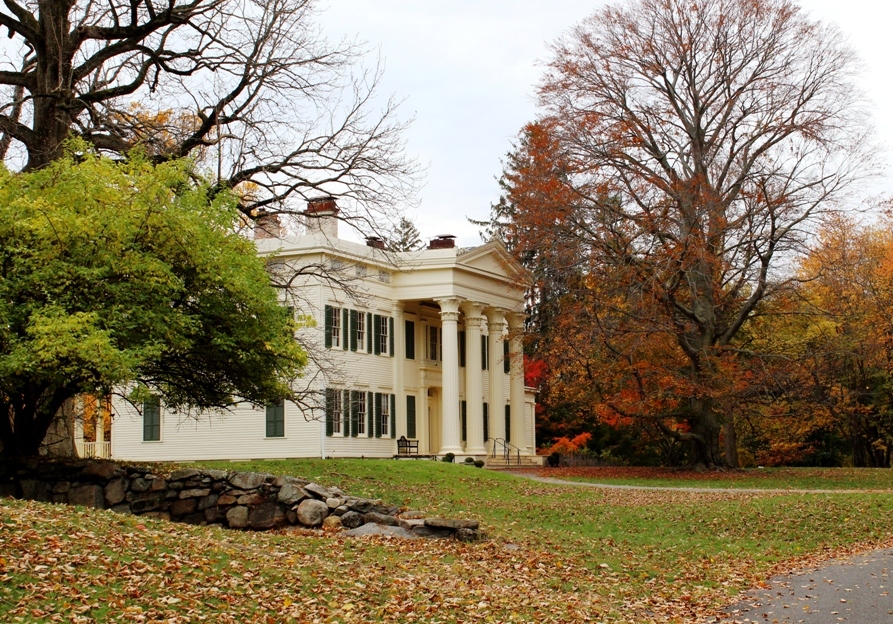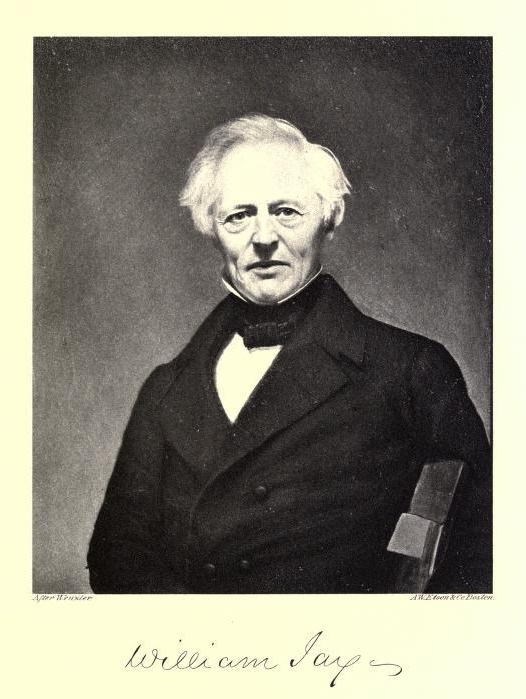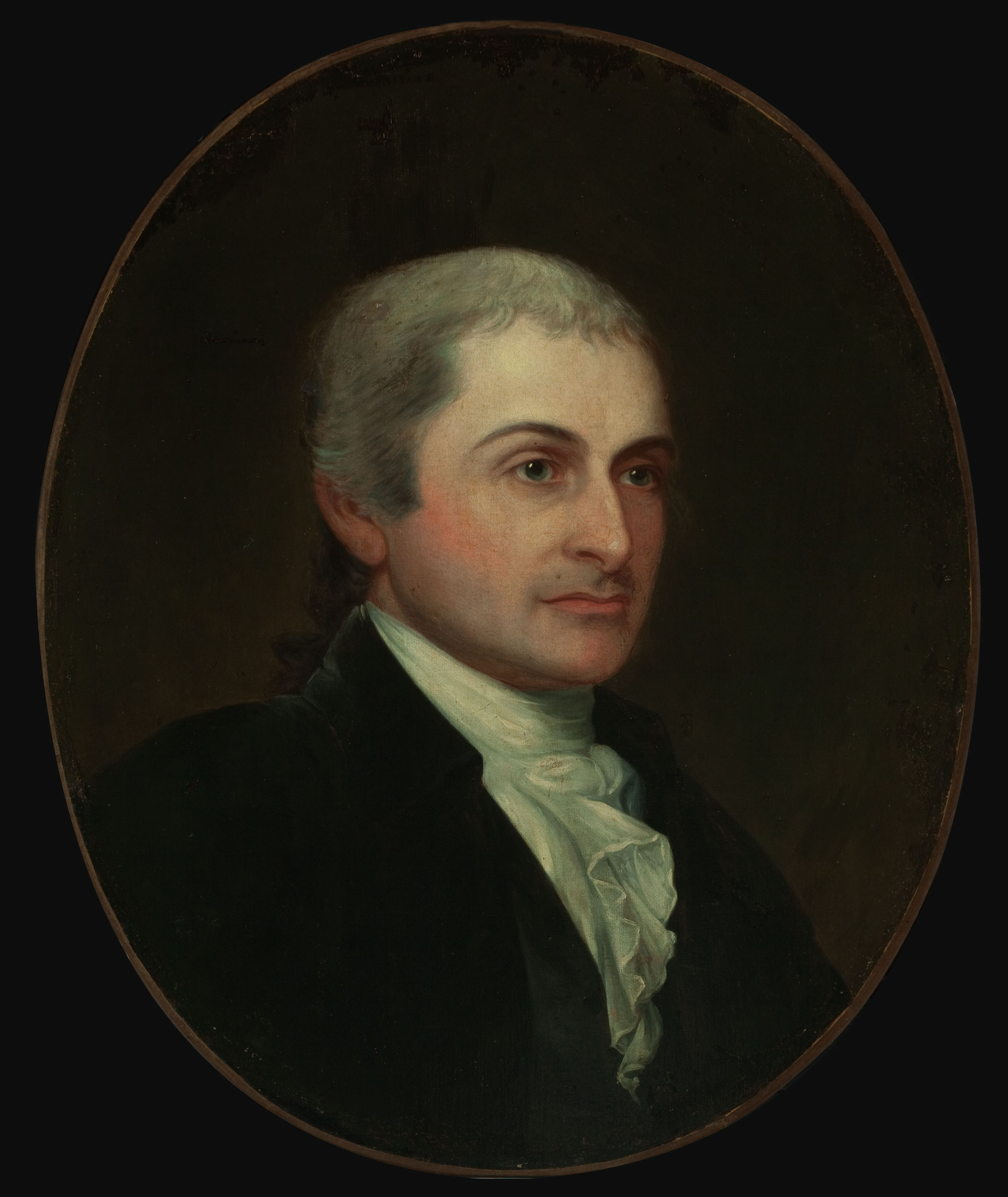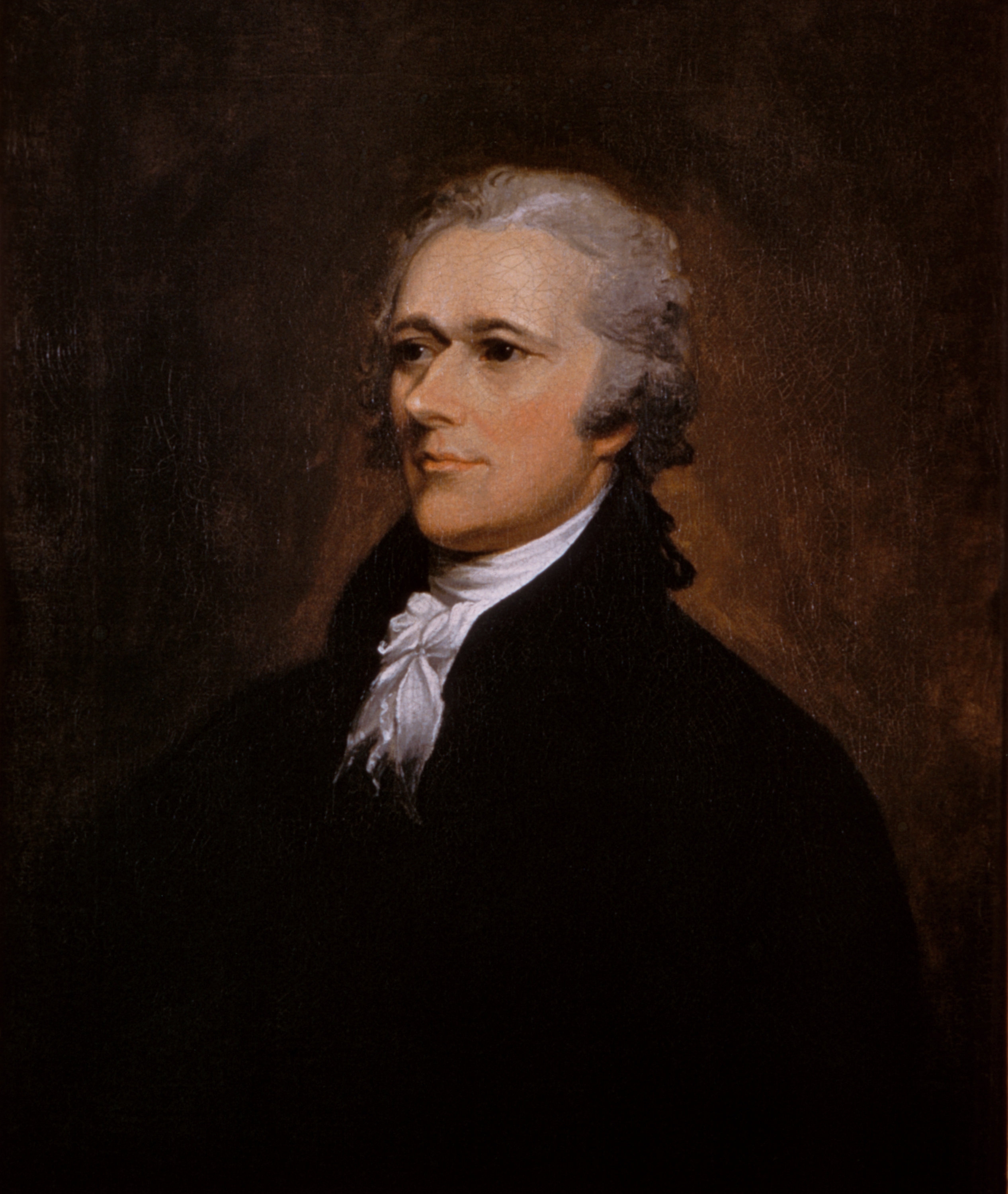|
John Jay
John Jay (December 12, 1745 – May 17, 1829) was an American statesman, patriot, diplomat, abolitionist, signatory of the Treaty of Paris, and a Founding Father of the United States. He served as the second governor of New York and the first chief justice of the United States. He directed U.S. foreign policy for much of the 1780s and was an important leader of the Federalist Party after the ratification of the United States Constitution in 1788. Jay was born into a wealthy family of merchants and New York City government officials of French Huguenot and Dutch descent. He became a lawyer and joined the New York Committee of Correspondence, organizing American opposition to British policies such as the Intolerable Acts in the leadup to the American Revolution. Jay was elected to the First Continental Congress, where he signed the Continental Association, and to the Second Continental Congress, where he served as its president. From 1779 to 1782, Jay served as the ambassador ... [...More Info...] [...Related Items...] OR: [Wikipedia] [Google] [Baidu] |
United States Secretary Of Foreign Affairs
This is a list of secretaries of state of the United States. Secretaries of foreign affairs (1781–1789) On January 10, 1780, the Confederation Congress created the Department of Foreign Affairs. On August 10, 1781, Congress selected Robert R. Livingston, a delegate from New York, as the first Secretary for Foreign Affairs. Livingston was unable to take office until October 20, 1781. He served until June 4, 1783, and was succeeded by John Jay on December 21, 1784, who served until March 4, 1789, when the government under the Articles of Confederation gave way to the government under the Constitution. The office of Secretary of Foreign Affairs and the Department of Foreign Affairs were reinstated by a law signed by George Washington on July 27, 1789. John Jay retained the post on an interim basis, pending the return of Thomas Jefferson from France. Secretaries of state On September 15, 1789, before Jefferson could return to take the post, Washington signed into law anothe ... [...More Info...] [...Related Items...] OR: [Wikipedia] [Google] [Baidu] |
Gilbert Stuart
Gilbert Charles Stuart ( Stewart; December 3, 1755 – July 9, 1828) was an American painter from Rhode Island Colony who is widely considered one of America's foremost portraitists. His best-known work is an unfinished portrait of George Washington, begun in 1796, which is sometimes referred to as the ''Athenaeum Portrait''. Stuart retained the portrait and used it to paint scores of copies that were commissioned by patrons in America and abroad. The image of George Washington featured in the painting has appeared on the United States one-dollar bill for more than a centuryGilbert Stuart Birthplace and Museum . ''Gilbert Stuart Biography''. Accessed July 24, 2007. and on various |
Philip Livingston
Philip Livingston (January 15, 1716 – June 12, 1778) was an American merchant and statesman from New York City. He represented New York at the October 1774 First Continental Congress, where he favored imposing economic sanctions upon Great Britain as a way of pressuring the British Parliament to repeal the Intolerable Acts. He was also a delegate to the Second Continental Congress from 1775 to 1778, and signed the Declaration of Independence, thus becoming one of the Founding Fathers of the United States. Early life Livingston was born in Albany, New York, on January 15, 1716, the fourth surviving son of Philip Livingston (1686–1749), 2nd Lord of the Manor, and Catherine Van Brugh Livingston, the daughter of Albany Mayor Pieter Van Brugh. Along with his brother, William Livingston (1723–1790), he grew up in the Albany area, dividing his time between his father's Albany townhouse and the manor house in Linlithgo, at the junction of the Roeliff Jansen Kill and the Hudson Riv ... [...More Info...] [...Related Items...] OR: [Wikipedia] [Google] [Baidu] |
Master Of Arts
A Master of Arts ( la, Magister Artium or ''Artium Magister''; abbreviated MA, M.A., AM, or A.M.) is the holder of a master's degree awarded by universities in many countries. The degree is usually contrasted with that of Master of Science. Those admitted to the degree have typically studied subjects within the scope of the humanities and social sciences, such as history, literature, languages, linguistics, public administration, political science, communication studies, law or diplomacy; however, different universities have different conventions and may also offer the degree for fields typically considered within the natural sciences and mathematics. The degree can be conferred in respect of completing courses and passing examinations, research, or a combination of the two. The degree of Master of Arts traces its origins to the teaching license or of the University of Paris, designed to produce "masters" who were graduate teachers of their subjects. Europe Czech Republic a ... [...More Info...] [...Related Items...] OR: [Wikipedia] [Google] [Baidu] |
Bachelor Of Arts
Bachelor of arts (BA or AB; from the Latin ', ', or ') is a bachelor's degree awarded for an undergraduate program in the arts, or, in some cases, other disciplines. A Bachelor of Arts degree course is generally completed in three or four years, depending on the country and institution. * Degree attainment typically takes four years in Afghanistan, Armenia, Azerbaijan, Bangladesh, Brazil, Brunei, China, Egypt, Ghana, Greece, Georgia, Hong Kong, Indonesia, Iran, Iraq, Ireland, Japan, Kazakhstan, Kenya, Kuwait, Latvia, Lebanon, Lithuania, Mexico, Malaysia, Mongolia, Myanmar, Nepal, Netherlands, Nigeria, Pakistan, the Philippines, Qatar, Russia, Saudi Arabia, Scotland, Serbia, South Korea, Spain, Sri Lanka, Taiwan, Thailand, Turkey, Ukraine, the United States and Zambia. * Degree attainment typically takes three years in Albania, Australia, Bosnia and Herzegovina, the Caribbean, Iceland, India, Israel, Italy, New Zealand, Norway, South Africa, Switzerland, the Canadian province of ... [...More Info...] [...Related Items...] OR: [Wikipedia] [Google] [Baidu] |
Columbia University
Columbia University (also known as Columbia, and officially as Columbia University in the City of New York) is a private research university in New York City. Established in 1754 as King's College on the grounds of Trinity Church in Manhattan, Columbia is the oldest institution of higher education in New York and the fifth-oldest institution of higher learning in the United States. It is one of nine colonial colleges founded prior to the Declaration of Independence. It is a member of the Ivy League. Columbia is ranked among the top universities in the world. Columbia was established by royal charter under George II of Great Britain. It was renamed Columbia College in 1784 following the American Revolution, and in 1787 was placed under a private board of trustees headed by former students Alexander Hamilton and John Jay. In 1896, the campus was moved to its current location in Morningside Heights and renamed Columbia University. Columbia scientists and scholars have ... [...More Info...] [...Related Items...] OR: [Wikipedia] [Google] [Baidu] |
Notable Descendants
Notability is the property of being worthy of notice, having fame, or being considered to be of a high degree of interest, significance, or distinction. It also refers to the capacity to be such. Persons who are notable due to public responsibility, accomplishments, or, even, mere participation in the celebrity industry are said to have a public profile. The concept arises in the philosophy of aesthetics regarding aesthetic appraisal.Aesthetic Appraisal', Philosophy (1975), 50: 189–204, Evan Simpson There are criticisms of art galleries determining monetary valuation, or valuation so as to determine what or what not to display, being based on notability of the artist, rather than inherent quality of the art work. Notability arises in decisions on coverage questions in journalism. Marketers and newspapers may try to create notability to create celebrity, fame, or notoriety, or to increase sales, as in the yellow press. The privileged class are sometimes called notables, when ... [...More Info...] [...Related Items...] OR: [Wikipedia] [Google] [Baidu] |
William Jay (jurist)
William Jay (June 16, 1789 – October 14, 1858) was an American abolitionist and jurist, son of Governor of New York and first U.S. Supreme Court Chief Justice John Jay. Early life Jay was born in New York City on 16 June 1789, in between his father's terms as United States Secretary of Foreign Affairs in the administration of George Washington. He was the son of John Jay (1745–1829) and Sarah Van Burgh (née Livingston) Jay (1756–1802). Among his older siblings was Peter Augustus (who served as Recorder of New York City under Richard Riker), Susan, Maria, and Ann Jay. His maternal grandparents were Susannah (née French) Livingston and William Livingston, an attorney who was a signer of the United States Constitution and later served as the first post-colonial Governor of New Jersey during the American Revolutionary War. His paternal grandparents were Peter Jay, a wealthy trader in furs, wheat, timber, and other commodities, and Mary (née Van Cortlandt) Jay (daughter ... [...More Info...] [...Related Items...] OR: [Wikipedia] [Google] [Baidu] |
Peter Augustus Jay (lawyer)
Peter Augustus Jay (January 24, 1776 – February 20, 1843) was a prominent New York lawyer, politician and the eldest son of Founding Father and first United States Chief Justice John Jay. Early life Peter Augustus Jay was born at Liberty Hall", on January 24, 1776, at the home of his maternal grandparents' in Elizabethtown, New Jersey. Peter was one of six children born to John Jay and Sarah Van Brugh (née Livingston) Jay, and one of two boys (brother William was born in 1789) with four sisters: Susan (born and died in 1780); Maria (b. 1782), Ann (b. 1783) and Sarah Louisa (b. 1792). Jay's paternal grandparents were Peter Jay, who was born in New York City in 1704 and became a wealthy trader in furs, wheat, timber, and other commodities, and Mary Van Cortlandt, who had married in 1728. Mary's father was Jacobus Van Cortlandt who was twice mayor of New York City. His mother was the eldest daughter of 13 children born to New Jersey Governor William Livingston (1723–1790) ... [...More Info...] [...Related Items...] OR: [Wikipedia] [Google] [Baidu] |
Sarah Livingston Jay
Sarah Van Brugh Livingston Jay (August 2, 1756 – May 28, 1802) was an American socialite and wife of founding father John Jay, in which capacity she was the wife of the President of the Continental Congress, of the Chief Justice of the United States, and First Lady of New York. Early life Sarah was born in 1756. She was the eldest daughter of wealthy landowner William Livingston (1723–1790) and Susannah French (1723–1789). Her father was an attorney who was a signer of the United States Constitution and later served as the first post-colonial Governor of New Jersey during the American Revolutionary War from 1776 until his death in 1790. Her paternal grandparents were Philip Livingston, the 2nd Lord of Livingston Manor, and Catherine Van Brugh, the only child of Albany mayor Pieter Van Brugh (1666–1740). Her paternal uncles included Robert Livingston (1708–1790), 3rd Lord of Livingston Manor, Peter Van Brugh Livingston (1710–1792), New York State Treasurer, and Phi ... [...More Info...] [...Related Items...] OR: [Wikipedia] [Google] [Baidu] |
Federalist Party
The Federalist Party was a Conservatism in the United States, conservative political party which was the first political party in the United States. As such, under Alexander Hamilton, it dominated the national government from 1789 to 1801. Defeated by the Jeffersonian Republicans in 1800, it became a minority party while keeping its stronghold in New England and made a brief resurgence by opposing the War of 1812. It then collapsed with its last presidential candidate in 1816. Remnants lasted for a few years afterwards. The party appealed to businesses and to conservatives who favored banks, national over state government, manufacturing, an army and navy, and in world affairs preferred Kingdom of Great Britain, Great Britain and strongly opposed the French Revolution. The party favored centralization, Early federalism in the United States, federalism, Modernization theory, modernization, Industrialization in the United States, industrialization and Protectionism in the United S ... [...More Info...] [...Related Items...] OR: [Wikipedia] [Google] [Baidu] |
Bedford (town), New York
Bedford is a town in Westchester County, New York. The population was 17,335 at the 2010 census. Bedford is located in the northeastern part of Westchester County and contains the three hamlets of Bedford Hills, Bedford, and Katonah. History The town of Bedford was founded on December 23, 1680, when 22 Puritans from Stamford, Connecticut, purchased a tract of land three miles square known as the "Hopp Ground" from Chief Katonah and several other Native Americans for coats, blankets, wampum and cloth. Bedford was made a part of Connecticut in 1697 when a patent fixed the boundaries as a six-mile square. Only when King William III of England issued a royal decree in 1700 settling a boundary dispute did Bedford become part of New York. The town served as the county seat of Westchester County during the American Revolutionary War after the Battle of White Plains, until Bedford was burned by the British in July 1779. British forces led by Lieutenant Colonel Banastre Tarleton burned ... [...More Info...] [...Related Items...] OR: [Wikipedia] [Google] [Baidu] |



.jpg)



